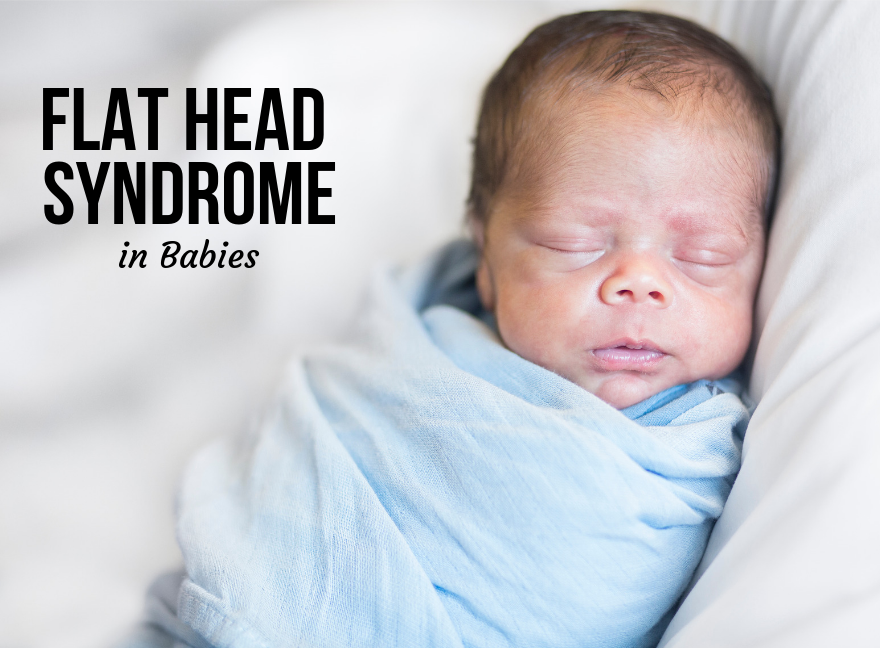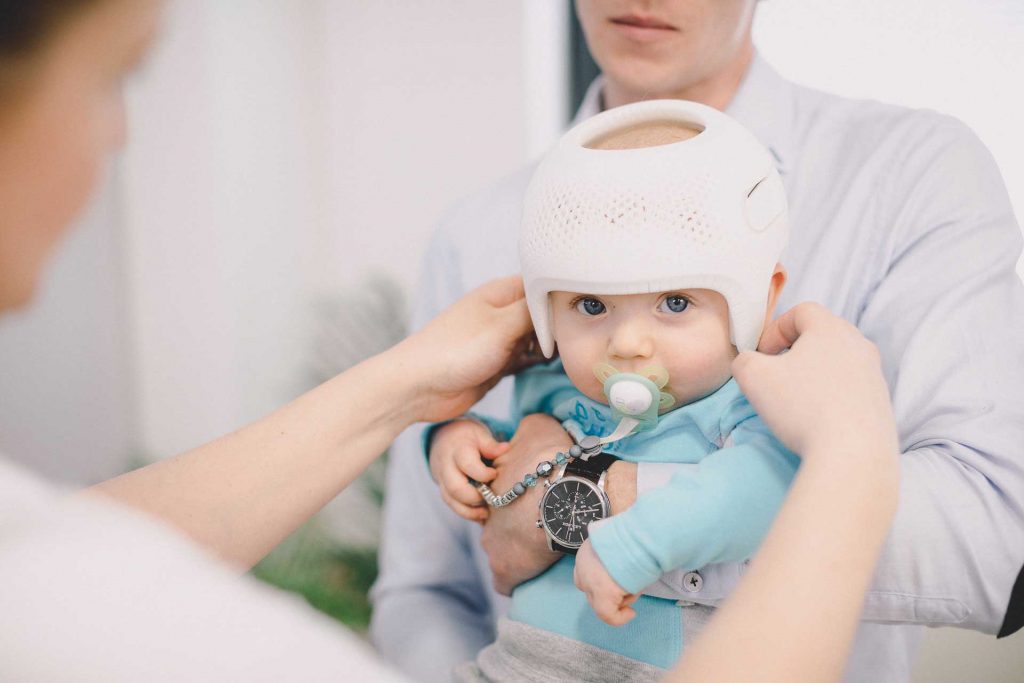
Plagiocephaly In Babies | Tips To Avoid Flat Head Syndrome.
Plagiocephaly is a misshapen or flat spot on the back of a child’s head. Plagiocephaly can happen when an infant spends too much time lying in one direction, and their skull becomes flat and wide on one side. Plagiocephaly is also known as “flat head syndrome” or “positional plagiocephaly”. Plagiocephaly In Babies happens most frequently in babies under age 1.
It is common for parents to wonder whether or not their baby has Flat Head Syndrome or if their little one’s head shape is normal. While some babies are born with slightly misshapen heads or develop a flat spot after spending a lot of time lying in the same position, Plagiocephaly is characterized by a flattened area on either side or back of the skull.

Flat head syndrome usually happens when a baby sleeps with the head turned to the same side during first months of life.
Plagiocephaly occurs most often in infants between 1 and 6 months old, but can occur at any age. Plagiocephaly is usually diagnosed by the child’s physician based on a thorough history and physical exam, though parents may also notice Plagiocephaly from the photographs they take of their little ones sleeping or playing from different angles.
Predisposing Factors
Flat head syndrome is commonly seen in infants with torticollis, a condition where one side of the neck muscles is tight and pulls the head into that position. It’s also more common in premature or low birth weight babies who spend time lying on their backs to help them breath more easily until they are stronger
Plagiocephaly is not typically associated with other symptoms, but if your baby experiences headache, vomiting, neck pain/stiffness, irritability , trouble nursing/feeding that lasts more than a day or two, you should contact your pediatrician immediately.
Tips To Avoid Plagiocephaly Or Flat Head Syndrome
If you think your child may have Plagiocephaly or Flat Head Syndrome, there are some simple steps parents can take at home that will help their baby’s head shape become more rounded naturally:
- The first thing you should do if you think Plagiocephaly or Flat Head Syndrome is compromising your child’s head shape is to switch their position in the crib. Changing up how you lay your baby down will help redistribute pressure and may reduce Plagiocephaly/Flat Head Syndrome from forming . Placing a rolled towel underneath one ear while your baby sleeps on his back can also help round out any Flat Head Syndrome.
- Infants with Plagiocephaly may benefit from tummy time while supervised: this helps strengthen neck muscles and make sure they are using both sides of their head equally.

Placing a baby on his or her stomach only while awake and supervised can help your baby develop strong neck and shoulder muscles.
- Placing a Plagiocephaly pillow around the side of your infant’s head that has flattest area can help gently ease the Syndrome and makes Plagiocephaly less noticeable.
- Plagiocephaly custom-made helmets are an option to correct Plagiocephaly if it is severe enough that it interferes with normal development. Custom-made helmets are typically covered by insurance companies.

A corrective helmet, or CRO, is a custom-made medical device used to address plagiocephaly in children with moderate-to-severe skull asymmetry.
Surgical Treatment to Correct Flat Head Syndrome
- Craniosynostosis surgery is a surgical procedure that reshapes the misshapen area around your son or daughter’s ears so their head can have a rounder shape. Craniosynostosis surgery costs several thousand dollars and insurance companies do not typically reimbursement because they consider it a cosmetic procedure. Surgical correction is a potentially life-threatening procedure and should be indicated only as a last resort.
If Plagiocephaly persists or is severe enough that you’re concerned about how noticeable your child’s misshapen head may be, talk with your child’s physician about this syndrome or get a referral to a Plagiocephaly specialist.
Dr James S Pendergraft | Orlando Women’s Center


Leave a Reply